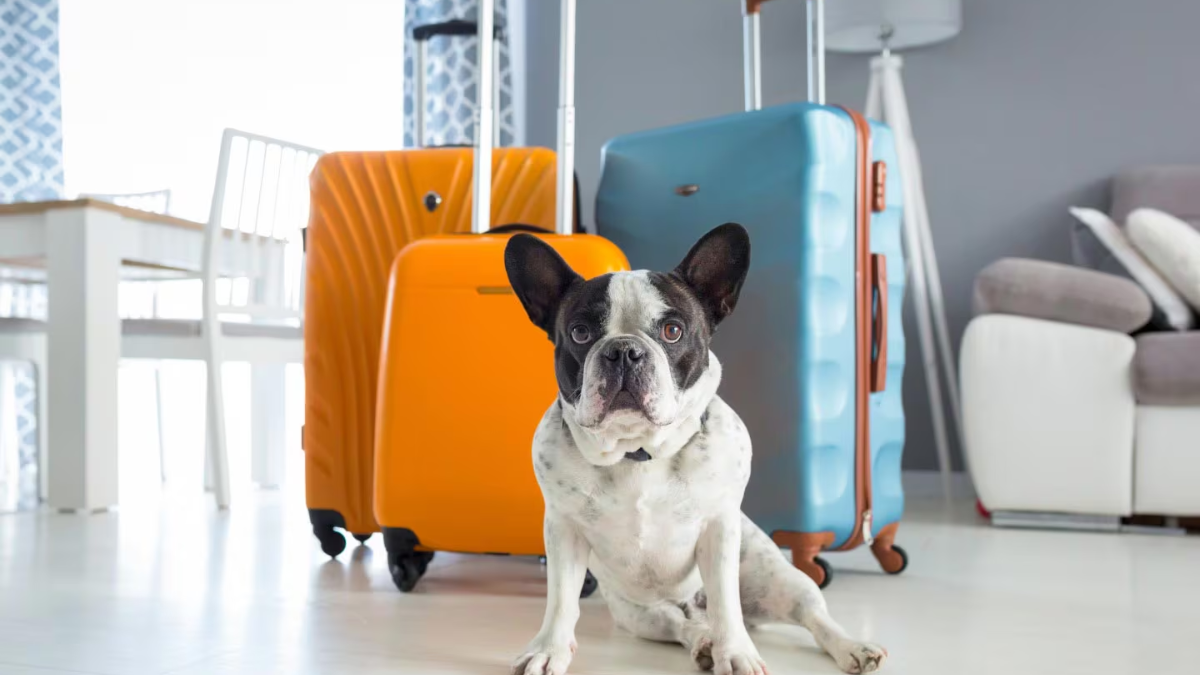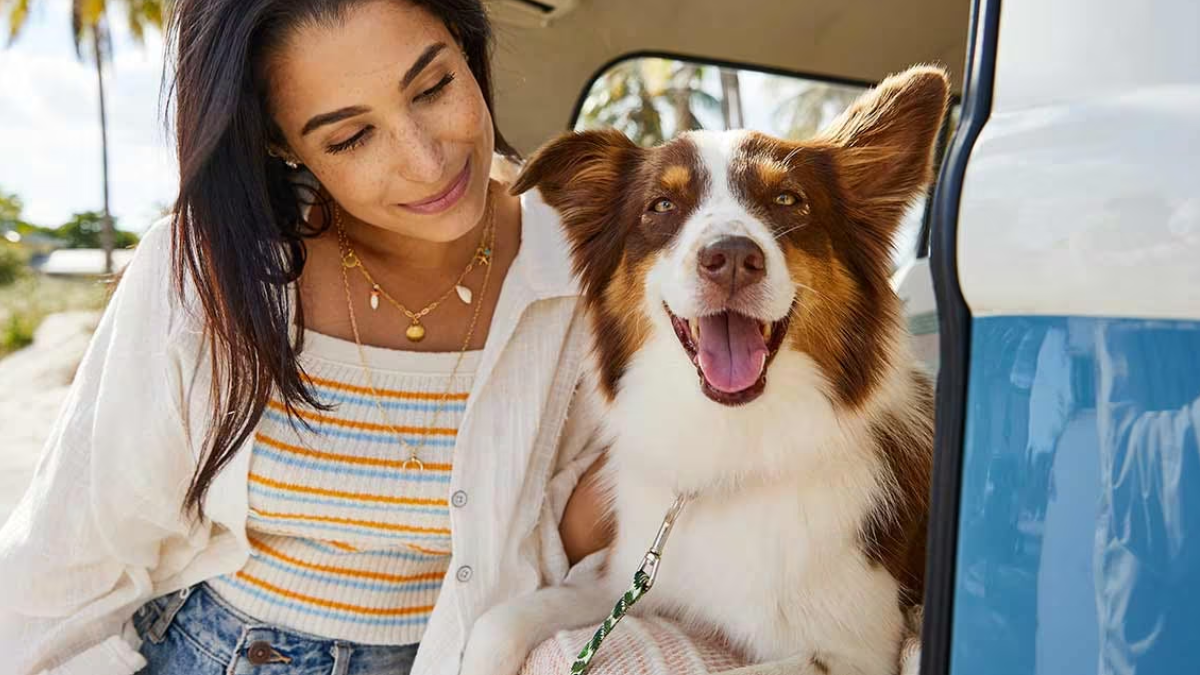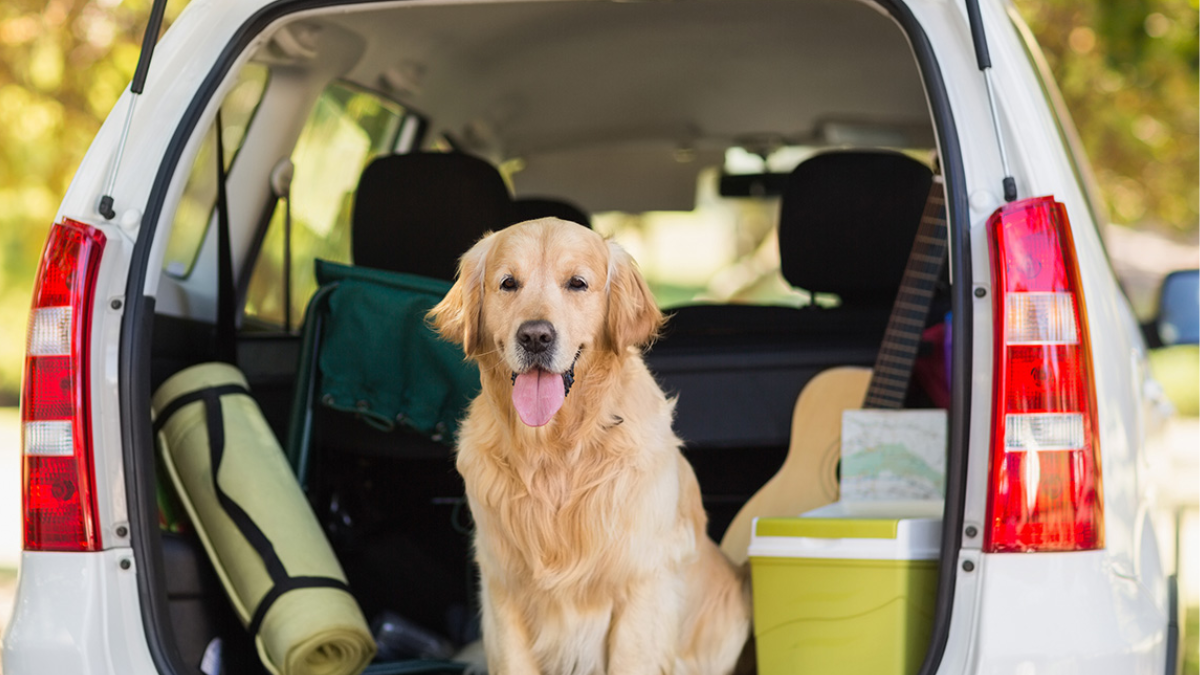Traveling with your furry friend can be a fun and rewarding experience, but it also requires some extra planning and preparation. One of the biggest challenges is maintaining your dog's sleep routine while on the go. Dogs, like humans, thrive on routine and consistency, and disruptions to their sleep schedule can lead to stress, anxiety, and behavior problems. However, with a little bit of effort and creativity, it is possible to keep your dog's sleep routine on track while traveling. With careful planning and consideration, you can ensure that traveling with your dog remains a comfortable and enjoyable experience for both you and your canine companion
One of the first things to consider when traveling with your dog is where they will sleep. While some dogs are comfortable sleeping anywhere, others may need a familiar bed or blanket to feel at ease. Bringing along a piece of home, such as a favorite toy or blanket, can help your dog feel more comfortable and secure in unfamiliar surroundings. It's also important to choose accommodations that are dog-friendly and provide a safe and comfortable sleeping environment for your furry companion.

Join the movement towards better pet wellness with Fi's advanced collar technology. Our cutting-edge collar not only tracks your dog's sleep but also monitors their sleep patterns effortlessly, providing valuable insights into their overall health and well-being. By monitoring your furry friend's rest, you can detect any irregularities early and take proactive steps to ensure they receive the care they deserve. With Fi, you're not just investing in a product; you're investing in your dog's happiness and longevity.
Prioritize your pet's health today and experience the difference our innovative technology can make in their life. Trust Fi to provide you with the tools you need to be the best pet parent possible. Ensure a stress-free trip by prioritizing your dog's sleep routine with our comprehensive guide to traveling with dogs. Learn how to maintain your pup's sleep schedule no matter where your travels take you. Together, let's ensure that every dog gets the quality sleep and care they need to thrive. Invest in their well-being with Fi's advanced collar technology.
Understanding Your Dog's Sleep Needs
When traveling with your dog, it's important to understand their sleep needs to maintain their routine. Dogs sleep differently than humans, and their sleep patterns vary depending on their breed, age, and activity level.
Canine Sleep Patterns
Dogs have two types of sleep: Rapid Eye Movement (REM) and Non-Rapid Eye Movement (NREM). NREM sleep is further divided into three stages, with each stage becoming progressively deeper. During NREM sleep, dogs are in a state of physical relaxation, and their body temperature, heart rate, and breathing slow down.
REM sleep is the stage where dogs dream. During this stage, their eyes move rapidly, and their brain activity increases. Dogs spend about 10-12% of their sleep in REM, and puppies spend more time in this stage than adult dogs.
Importance of Routine
Just like humans, dogs thrive on routine. Maintaining a consistent sleep schedule can help your dog feel more relaxed and comfortable while traveling. Disrupting their sleep routine can lead to anxiety, stress, and behavioral issues.
To ensure your dog gets the sleep they need, stick to their regular bedtime and wake-up time as closely as possible. If you're crossing time zones, gradually adjust their sleep schedule by 15-30 minutes each day to help them acclimate.
In summary, understanding your dog's sleep needs is crucial when traveling with them. Knowing their sleep patterns and the importance of routine can help you maintain their sleep schedule and ensure they are well-rested and happy on the go.
Pre-Trip Preparation
Choosing the Right Gear
Before embarking on a trip with your furry friend, it's important to make sure you have all the necessary gear to maintain your sleep routine. This includes a comfortable bed, blankets, and toys that they are familiar with. It's also important to choose the right carrier or crate for your dog. The carrier should be spacious enough for them to move around comfortably but not too big that they feel insecure.

When selecting a carrier or crate, it's important to consider the mode of transportation. For example, if you're traveling by car, a crate that can be secured with a seatbelt is ideal. If you're traveling by plane, make sure the carrier meets the airline's requirements and is labeled with your dog's name, your name, and contact information.
Sleep Schedule Adjustments
Traveling can disrupt your dog's sleep schedule, so it's important to make adjustments to their routine before the trip. A few weeks before the trip, gradually adjust their bedtime and wake-up time to match the time zone of your destination. This will help them adjust to the new time zone and prevent jet lag.
It's also important to maintain their exercise routine before the trip. Exercise helps your dog expend energy and sleep better at night. Make sure to take them for walks or play with them to tire them out before bedtime.
In addition, consider bringing familiar items from home to help your dog feel more comfortable in a new environment. This can include their favorite blanket, toys, or even a piece of clothing with your scent on it.
By choosing the right gear and making adjustments to your dog's sleep schedule, you can help maintain their sleep routine while traveling. This will ensure a comfortable and stress-free trip for both you and your furry companion.
On the Road
When traveling with a dog, maintaining sleep routines can be a challenge. However, with some preparation and planning, it is possible to create a comfortable environment for your furry friend and minimize anxiety and stress.
Creating a Comfortable Environment
One way to ensure a good night's sleep for your dog is to create a comfortable sleeping space. This can be achieved by bringing along familiar bedding, such as a favorite blanket or dog bed. Additionally, it is important to consider the temperature of the sleeping area. If the room is too hot or cold, it can make it difficult for your dog to sleep. Bringing along a portable fan or heater can help regulate the temperature and create a comfortable environment.
Managing Anxiety and Stress
Traveling can be stressful for dogs, which can impact their sleep. To help manage anxiety and stress, it is important to maintain a consistent routine. This includes feeding and walking your dog at the same time each day. Additionally, bringing along familiar toys or treats can help provide a sense of comfort and security.
If your dog is prone to anxiety or stress, consider using calming aids such as pheromone sprays or natural supplements. It is important to consult with your veterinarian before using any calming aids to ensure they are safe and effective for your dog.
By creating a comfortable environment and managing anxiety and stress, you can help maintain your dog's sleep routine while on the road.

Destination Sleep Success
Traveling with a dog can be a challenge, especially when it comes to maintaining sleep routines. However, with a little planning and preparation, it is possible to ensure that your furry friend gets the rest they need while on the road. Here are some tips for achieving destination sleep success with your dog.
Maintaining Regular Exercise
One of the best ways to help your dog sleep well while traveling is to make sure they get plenty of exercise during the day. This can help them burn off excess energy and feel more relaxed when it's time to settle down for the night. Make sure to schedule regular walks or playtime sessions throughout the day, and try to stick to your dog's usual exercise routine as much as possible.
Consistency in Sleeping Arrangements
Another key to achieving destination sleep success with your dog is to maintain consistency in their sleeping arrangements. This means bringing along their usual bed or crate and setting it up in a quiet, comfortable spot in your hotel room or other accommodations. If your dog is used to sleeping with you at home, consider bringing along a familiar blanket or pillow to help them feel more at ease.
In addition to providing a comfortable sleeping space, it's also important to establish a consistent bedtime routine for your dog. This might include a calming walk or play session before bed, followed by a special treat or toy to help them wind down. By establishing a consistent routine, your dog will be more likely to feel relaxed and ready for sleep when it's time to hit the hay.
Overall, traveling with a dog requires some extra planning and effort, but with the right approach, it's possible to maintain your pet's sleep routine and ensure they get the rest they need while on the go. By staying consistent with exercise and sleeping arrangements, you can help your furry friend feel more relaxed and comfortable, no matter where your travels take you.
Dealing with Time Zone Changes
Traveling with a dog can be challenging, especially when it comes to maintaining a consistent sleep routine. One of the biggest obstacles to overcome is dealing with time zone changes. Here are some tips to help your furry friend adjust to the new time zone.
Gradual Adjustment Strategy
One way to help your dog adjust to a new time zone is to gradually adjust their sleep schedule. A few days before your trip, start adjusting your dog's sleep schedule by 15-30 minutes each day. This will help your dog gradually get used to the new time zone without feeling too disoriented.

Once you arrive at your destination, continue to adjust your dog's sleep schedule by small increments each day until they are fully adjusted to the new time zone. This gradual adjustment strategy can help minimize the impact of jet lag on your dog.
Immediate Adjustment Strategy
If you don't have the luxury of time to gradually adjust your dog's sleep schedule, you can try an immediate adjustment strategy. This involves immediately shifting your dog's sleep schedule to match the new time zone.
To do this, keep your dog awake during the day and encourage them to sleep at night in the new time zone. You can help your dog adjust by keeping them active during the day with walks, playtime, and other activities. At night, create a comfortable sleeping environment for your dog with a familiar bed, blanket, or toy.
It's important to remember that every dog is different, and what works for one dog may not work for another. Be patient and flexible, and don't be afraid to try different strategies until you find what works best for your furry friend.
Troubleshooting Common Issues
Dealing with Disturbances
Traveling with a dog can be challenging, especially when it comes to maintaining their sleep routine. One of the most common issues is disturbances that can disrupt their sleep. Dogs are sensitive to their surroundings, and any noise or movement can wake them up. Here are some tips to deal with disturbances:
- Choose a quiet location: When booking accommodation, choose a place that is away from noisy areas. Avoid rooms near elevators, staircases, and vending machines. If possible, book a room on a higher floor, as it can be quieter.
- Use white noise: White noise can help mask any disturbances and create a calming environment for your dog. You can use a white noise machine or a smartphone app to play white noise.
- Bring familiar bedding: Bringing your dog's bedding from home can provide them with a sense of familiarity and comfort. The familiar scent can also help them relax and feel more at ease.

Addressing Overstimulation
Another common issue when traveling with a dog is overstimulation. New surroundings, people, and smells can be overwhelming for them, leading to restlessness and sleep disturbances. Here are some tips to address overstimulation:
- Stick to a routine: Try to maintain your dog's routine as much as possible, including feeding and walking times. This can provide them with a sense of familiarity and stability.
- Exercise your dog: Regular exercise can help your dog burn off excess energy and reduce restlessness. Take them for a walk or play with them before bedtime.
- Use calming aids: Calming aids, such as pheromone sprays or supplements, can help your dog relax and feel more at ease. Consult with your veterinarian before using any calming aids.
By following these tips, you can troubleshoot common issues and help your dog maintain their sleep routine while traveling.
Returning Home
After a fun and exciting trip with your furry friend, it's time to return home. However, it's important to note that returning home can be just as stressful for your dog as leaving home was.
Reestablishing Home Routines
To help ease the transition back to everyday life, it's important to re-establish home routines as soon as possible. This includes feeding, exercise, and sleep schedules. Dogs thrive on routine, so the sooner you can get back to your routine, the better.
To help your dog adjust to the return home, try to keep things as consistent as possible. Stick to the same feeding and exercise schedule you had before you left, and make sure your dog has plenty of time to rest and relax.
Post-Travel Check-Up
After returning home, it's a good idea to schedule a post-travel check-up with your veterinarian. This will help ensure that your dog is healthy and free from any travel-related illnesses or injuries.
During the check-up, your veterinarian will likely ask about your dog's travel experience, including any changes in behavior or appetite. They may also perform a physical exam to check for any signs of illness or injury.

Overall, returning home after traveling with your dog can be a smooth transition with a little bit of planning and preparation. By re-establishing home routines and scheduling a post-travel check-up, you can help ensure that your furry friend stays happy and healthy after your trip.
Conclusion:
In conclusion, traveling with your dog can be a rewarding experience for both you and your furry companion. By following the tips and advice provided in this guide, you can ensure that your travels are safe, enjoyable, and stress-free. Remember to plan, pack all the necessary supplies, and prioritize your dog's comfort and well-being throughout the journey. Whether you're embarking on a road trip, flying to a new destination, or exploring the great outdoors, proper preparation and consideration for your dog's needs are key.
Additionally, don't forget to check and comply with any travel regulations or requirements, especially if you're crossing borders or staying in pet-friendly accommodations. With the right mindset and preparation, traveling with your dog can strengthen your bond and create lasting memories together. So, embrace the adventure, explore new destinations, and cherish the moments spent traveling with your beloved canine companion. Safe travels!




